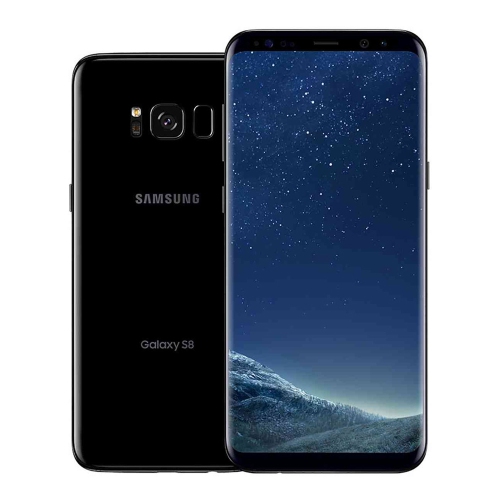







Refurbished (Good) - Apple iPhone XS 64GB Smartphone - Space Grey - Unlocked
What's included:
- We staff our customer service team 7 days/week, 12 hours/day. Please contact us if you have any questions regarding our products. We will reply promptly and are happy to answer any questions you may have.Return PolicyWe guarantee functionality of the device for 60 Days from date of purchase. Returns are free, as long as the defect was not created due to improper care (water damage, impact damage, etc). Refunds will be issued within 2 business days of receiving the returned device. Please
All iPhone Xs models -- which Apple styles as both iPhone Xs and the uppercase iPhone XS -- have a 3D-touch equipped 5.8" (diagonal) OLED HDR "Super Retina" display (2436x1125, 458 ppi, 1 million:1 contrast ratio) that occupies nearly the entire front of the device. It has three cameras. On the front -- tucked in the "notch" -- is a "TrueDepth" camera that in addition to supporting "Advanced Face ID" identification functionality, takes 7 megapixel photos, shoots 1080p video, and has software support for Portrait mode, Portrait lighting, and more. The two rear cameras, one wide angle (f/1.8 aperture) and one telephoto (f/2.4 aperture), both have 12 megapixel sensors, support optical image stabilization, and shoot 4K photos and video. With a combination of hardware and software functionality, the rear cameras offer "advanced depth segmentation," Smart HDR, improved bokeh quality, and dynamic retroactively adjustable depth of field.
The iPhone Xs uses a "surgical-grade stainless steel" case and has a glass front and back. It is splash, water, and dust-resistant to the IP68 standard (maximum depth of 2 meters up to 30 minutes). It is sold in three color options, gold, silver, and a dark "Space Gray" (pictured, left).
Internally, the iPhone Xs is powered by a 64-bit, 7 nm "Apple A12 Bionic" processor with six cores -- two performance cores and four high-efficiency cores -- and an "8-core Neural Engine." It has 4 GB of RAM and 64 GB, 256 GB, or 512 GB of flash storage. It also supports 802.11ac Wi-Fi with 2x2 MIMO, Bluetooth 5.0, LTE (Gigabit-class with 4x4 MIMO and LAA), NFC for Apple Pay, "Express Cards with power reserve" for compatible transit systems, and dual SIMs, one hardware nano SIM and one software-based eSIM.
Apple estimates that the iPhone Xs provides "up to" 60 hours of audio playback, 20 hours of talk time, 12 hours of Internet use, and 14 hours of wireless video playback. Because of the device's glass back, the battery can be charged wirelessly using a charging mat that supports the Qi standard.
























 Line
Line Telegram
Telegram